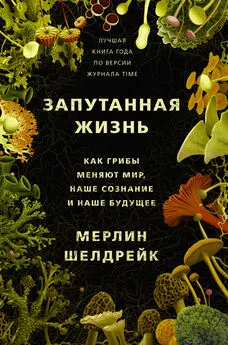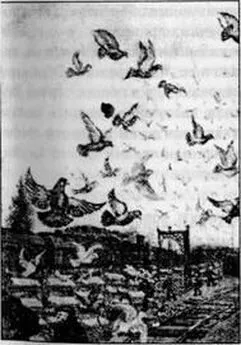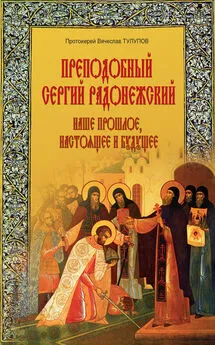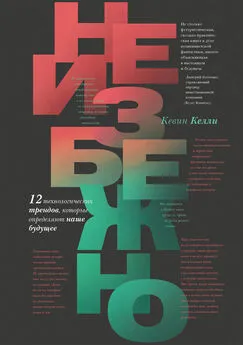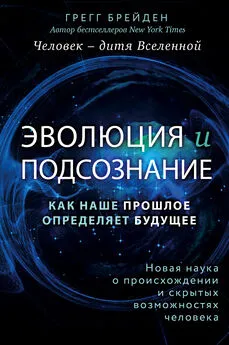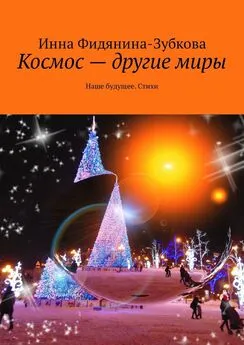Мерлин Шелдрейк - Запутанная жизнь. Как грибы меняют мир, наше сознание и наше будущее
- Название:Запутанная жизнь. Как грибы меняют мир, наше сознание и наше будущее
- Автор:
- Жанр:
- Издательство:Литагент АСТ
- Год:2021
- Город:Москва
- ISBN:978-5-17-122572-8
- Рейтинг:
- Избранное:Добавить в избранное
-
Отзывы:
-
Ваша оценка:
Мерлин Шелдрейк - Запутанная жизнь. Как грибы меняют мир, наше сознание и наше будущее краткое содержание
Талантливый молодой биолог Мерлин Шелдрейк переворачивает мир с ног на голову: он приглашает читателя взглянуть на него с позиции дрожжей, псилоцибиновых грибов, грибов-паразитов и паутины мицелия, которая простирается на многие километры под поверхностью земли (что делает грибы самыми большими живыми организмами на планете). Открывающаяся грибная сущность заставляет пересмотреть наши взгляды на индивидуальность и разум, ведь грибы, как выясняется, – повелители метаболизма, создатели почв и ключевые игроки во множестве естественных процессов. Они способны изменять наше сознание, врачевать тела и даже обратить нависшую над нами экологическую катастрофу. Эти организмы переворачивают наше понимание самой жизни на Земле.
В формате PDF A4 сохранен издательский макет.
Запутанная жизнь. Как грибы меняют мир, наше сознание и наше будущее - читать онлайн бесплатно ознакомительный отрывок
Интервал:
Закладка:
Taylor L, Leake J, Quirk J, Hardy K, Banwart S, Beerling D. 2009. Biological weathering and the long-term carbon cycle: integrating mycorrhizal evolution and function into the current paradigm. Geobiology 7: 171–91.
Taylor T, Klavins S, Krings M, Taylor E, Kerp H, Hass H. 2007. Fungi from the Rhynie chert: a view from the dark side. Transactions of the Royal Society of Edinburgh: Earth Sciences 94: 457–73.
Temple R. 2007. The prehistory of panspermia: astrophysical or metaphysical? International Journal of Astrobiology 6: 169–80.
Tero A, Takagi S, Saigusa T, Ito K, Bebber DP, Flicker MD, Yumiki K, Kobayashi R, Nakagaki T. 2010. Rules for biologically inspired adaptive network design. Science 327: 439–42.
Terrer C, Vicca S, Hungate BA, Phillips RP, Prentice IC. 2016. Mycorrhizal association as a primary control of the CO2 fertilization effect. Science 353: 72–74.
Thierry G. 2019. Lab-grown mini brains: we can’t dismiss the possibility that they could one day outsmart us. The Conversation : theconversation.com/lab-grown-mini-brains-we-cant-dismiss-the-possibility-that-they-could-one-day-outsmart-us-125842 [accessed October 29, 2019].
Thirkell TJ, Charters MD, Elliott AJ, Sait SM, Field KJ. 2017. Are mycorrhizal fungi our sustainable saviours? Considerations for achieving food security. Journal of Ecology 105: 921–29.
Thirkell TJ, Pastok D, Field KJ. 2019. Carbon for nutrient exchange between arbuscular mycorrhizal fungi and wheat varies according to cultivar and changes in atmospheric carbon dioxide concentration. Global Change Biology : DOI: 10:1111/gcb.14851.
Thomas P, Büntgen U. 2017. First harvest of Périgord black truffle in the UK as a result of climate change. Climate Research 74: 67–70.
Tilman D, Balzer C, Hill J, Befort BL. 2011. Global food demand and the sustainable intensification of agriculture. Proceedings of the National Academy of Sciences 108: 20260–264.
Tilman D, Cassman KG, Matson PA, Naylor R, Polasky S. 2002. Agricultural sustainability and intensive production practices. Nature 418: 671–77.
Tkavc R, Matrosova VY, Grichenko OE, Gostinčar C, Volpe RP, Klimenkova P, Gaidamakova EK, Zhou CE, Stewart BJ, Lyman MG, et al. 2018. Prospects for Fungal Bioremediation of Acidic Radioactive Waste Sites: Characterization and Genome Sequence of Rhodotorula taiwanensis MD1149. Frontiers in Microbiology 8: 2528.
Tlalka M, Bebber DP, Darrah PR, Watkinson SC, Fricker MD. 2007. Emergence of self-organised oscillatory domains in fungal mycelia. Fungal Genetics and Biology 44: 1085–95.
Tlalka M, Hensman D, Darrah P, Watkinson S, Fricker MD. 2003. Noncircadian oscillations in amino acid transport have complementary profiles in assimilatory and foraging hyphae of Phanerochaete velutina. New Phytologist 158: 325–35.
Toju H, Guimarães PR, Olesen JM, Thompson JN. 2014. Assembly of complex plant – fungus networks. Nature Communications 5: 5273.
Toju H, Peay KG, Yamamichi M, Narisawa K, Hiruma K, Naito K, Fukuda S, Ushio M, Nakaoka S, Onoda Y, et al. 2018. Core microbiomes for sustainable agroecosystems. Nature Plants 4: 247–57.
Toju H, Sato H. 2018. Root-associated fungi shared between arbuscular mycorrhizal and ectomycorrhizal conifers in a temperate forest. Frontiers in Microbiology 9: 433.
Toju H, Yamamoto S, Tanabe AS, Hayakawa T, Ishii HS. 2016. Network modules and hubs in plant-root fungal biomes. Journal of the Royal Society Interface 13: 20151097.
Tolkien JRR. 2014. The Lord of the Rings . London, UK: Harper Collins.
Tornberg K, Olsson S. 2002. Detection of hydroxyl radicals produced by wood-decomposing fungi. FEMS Microbiology Ecology 40: 13–20.
Torri L, Migliorini P, Masoero G. 2013. Sensory test vs. electronic nose and/or image analysis of whole bread produced with old and modern wheat varieties adjuvanted by means of the mycorrhizal factor. Food Research International 54: 1400–408.
Toyota M, Spencer D, Sawai-Toyota S, Jiaqi W, Zhang T, Koo AJ, Howe GA, Gilroy S. 2018. Glutamate triggers long-distance, calcium-based plant defense signaling. Science 361: 1112–115.
Trappe J. 2015. “Foreword.” In Mycorrhizal Networks . Horton T., ed. Springer International Publishing.
Trappe JM. 2005. A. B. Frank and mycorrhizae: the challenge to evolutionary and ecologic theory. Mycorrhiza 15: 277–81.
Trewavas A. 2016. Intelligence, Cognition, and Language of Green Plants. Frontiers in Psychology 7: 588.
Trewavas A. 2014. Plant Behaviour and Intelligence . Oxford, UK: Oxford University Press.
Trewavas A. 2007. Response to Alpi et al.: Plant neurobiology – all metaphors have value. Trends in Plant Science 12: 231–33.
Trivedi DK, Sinclair E, Xu Y, Sarkar D, Walton-Doyle C, Liscio C, Banks P, Milne J, Silverdale M, Kunath T, et al. 2019. Discovery of volatile biomarkers of Parkinson’s disease from sebum. ACS Central Science 5: 599–606.
Tsing AL. 2015. The Mushroom at the End of the World . Princeton, NJ: Princeton University Press.
Tuovinen V, Ekman S, Thor G, Vanderpool D, Spribille T, Johannesson H. 2019. Two basidiomycete fungi in the cortex of wolf lichens. Current Biology 29: 476–83.
Tyne D, Manson AL, Huycke MM, Karanicolas J, Earl AM, Gilmore MS. 2019. Impact of antibiotic treatment and host innate immune pressure on enterococcal adaptation in the human bloodstream. Science Translational Medicine 11: eaat8418.
Umehata H, Fumagalli M, Smail I, Matsuda Y, Swinbank AM, Cantalupo S, Sykes C, Ivison RJ, Steidel CC, Shapley AE, et al. 2019. Gas filaments of the cosmic web located around active galaxies in a protocluster. Science 366: 97–100.
Vadder F, Grasset E, Holm L, Karsenty G, Macpherson AJ, Olofsson LE, Bäckhed F. 2018. Gut microbiota regulates maturation of the adult enteric nervous system via enteric serotonin networks. Proceedings of the National Academy of Sciences 115: 6458–463.
Vahdatzadeh M, Deveau A, Splivallo R. 2015. The role of the microbiome of truffles in aroma formation: a meta-analysis approach. Applied and Environmental Microbiology 81: 6946–952.
Vajda V, McLoughlin S. 2004. Fungal proliferation at the cretaceous-tertiary boundary. Science 303: 1489–489.
Valles-Colomer M, Falony G, Darzi Y, Tigchelaar EF, Wang J, Tito RY, Schiweck C, Kurilshikov A, Joossens M, Wijmenga C, et al. 2019. The neuroactive potential of the human gut microbiota in quality of life and depression. Nature Microbiology : 623–32.
van Delft FC, Ipolitti G, Nicolau DV, Perumal A, Kašpar O, Kheireddine S, Wachsmann-Hogiu S, Nicolau DV. 2018. Something has to give: scaling combinatorial computing by biological agents exploring physical networks encoding NP-complete problems. Journal of the Royal Society Interface Focus 8: 20180034.
van der Heijden MG. 2016. Underground networking. Science 352: 290–91.
van der Heijden MG, Bardgett RD, Straalen NM. 2008. The unseen majority: soil microbes as drivers of plant diversity and productivity in terrestrial ecosystems. Ecology Letters 11: 296–310.
van der Heijden MG, Dombrowski N, Schlaeppi K. 2017. Continuum of root-fungal symbioses for plant nutrition. Proceedings of the National Academy of Sciences 114: 11574–576.
van der Heijden MG, Horton TR. 2009. Socialism in soil? The importance of mycorrhizal fungal networks for facilitation in natural ecosystems. Journal of Ecology 97: 1139–150.
van der Heijden MG, Walder F. 2016. Reply to “Misconceptions on the application of biological market theory to the mycorrhizal symbiosis.” Nature Plants 2: 16062.
van der Linde S, Suz LM, Orme DC, Cox F, Andreae H, Asi E, Atkinson B, Benham S, Carroll C, Cools N, et al. 2018. Environment and host as large-scale controls of ectomycorrhizal fungi. Nature 558: 243–48.
Vannini C, Carpentieri A, Salvioli A, Novero M, Marsoni M, Testa L, Pinto M, Amoresano A, Ortolani F, Bracale M, et al. 2016. An interdomain network: the endobacterium of a mycorrhizal fungus promotes antioxidative responses in both fungal and plant hosts. New Phytologist 211: 265–75.
Van Tyne D, Manson AL, Huycke MM, Karanicolas J, Earl AM, Gilmore MS. 2019. Impact of antibiotic treatment and host innate immune pressure on enterococcal adaptation in the human bloodstream. Science Translational Medicine 487: eaat8418.
Venner S, Feschotte C, Biémont C. 2009. Dynamics of transposable elements: towards a community ecology of the genome. Trends in Genetics 25: 317–23.
Verbruggen E, Röling WF, Gamper HA, Kowalchuk GA, Verhoef HA, van der Heijden MG. 2010. Positive effects of organic farming on below-ground mutualists: large-scale comparison of mycorrhizal fungal communities in agricultural soils. New Phytologist 186: 968–79.
Vetter W, Roberts D. 2007. Revisiting the organohalogens associated with 1979-samples of Brazilian bees ( Eufriesea purpurata ). Science of the Total Environment 377: 371–77.
Vita F, Taiti C, Pompeiano A, Bazihizina N, Lucarotti V, Mancuso S, Alpi A. 2015. Volatile organic compounds in truffle ( Tuber magnatum Pico): comparison of samples from different regions of Italy and from different seasons. Scientific Reports 5: 12629.
Viveiros de Castro E. 2004. Exchanging perspectives: the transformation of objects into subjects in amerindian ontologies. Common Knowledge : 463–84.
von Bertalanffy L. 1933. Modern Theories of Development: An Introduction to Theoretical Biology . London, UK: Humphrey Milford.
Wadley G, Hayden B. 2015. Pharmacological influences on the Neolithic Transition. Journal of Ethnobiology 35: 566–84.
Wagg C, Bender FS, Widmer F, van der Heijden MG. 2014. Soil biodiversity and soil community composition determine ecosystem multifunctionality. Proceedings of the National Academy of Sciences 111: 5266–270.
Wainwright M. 1989a. Moulds in ancient and more recent medicine. Mycologist 3: 21–23.
Wainwright M. 1989b. Moulds in Folk Medicine. Folklore 100: 162–66.
Wainwright M, Rally L, Ali T. 1992. The scientific basis of mould therapy. Mycologist 6: 108–10.
Walder F, Niemann H, Natarajan M, Lehmann MF, Boller T, Wiemken A. 2012. Mycorrhizal networks: common goods of plants shared under unequal terms of trade. Plant Physiology 159: 789–97.
Walder F, van der Heijden MG. 2015. Regulation of resource exchange in the arbuscular mycorrhizal symbiosis. Nature Plants 1: 15159.
Waller LP, Felten J, Hiiesalu I, Vogt-Schilb H. 2018. Sharing resources for mutual benefit: crosstalk between disciplines deepens the understanding of mycorrhizal symbioses across scales. New Phytologist 217: 29–32.
Wang B, Yeun L, Xue J, Liu Y, Ané J, Qiu Y. 2010. Presence of three mycorrhizal genes in the common ancestor of land plants suggests a key role of mycorrhizas in the colonization of land by plants. New Phytologist 186: 514–25.
Wasson G, Hofmann A, Ruck C. 2009. The Road to Eleusis: Unveiling the Secret of the Mysteries . Berkeley, CA: North Atlantic Books.
Wasson G, Kramrisch S, Ott J, Ruck C. 1986. Persephone’s Quest: Entheogens and the Origins of Religion . New Haven, CT: Yale University Press.
Wasson VP, Wasson G. 1957. Mushrooms, Russia and History. New York, NY: Pantheon Books, Inc.
Читать дальшеИнтервал:
Закладка:
